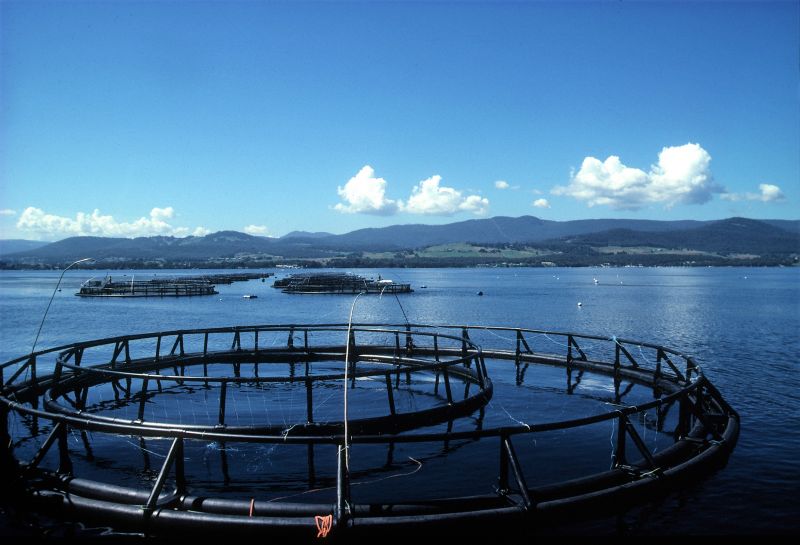Keeping Ocean Currents from Carrying Disease to Farmed Salmon
Published on by Water Network Research, Official research team of The Water Network in Academic
Norwegian researchers are using computer modelling to figure out how best to site farms to protect fish and the coastline.
Currents in the ocean and fjords spread viruses that are killing large numbers of farmed salmon. Where should fish farms be built? And should they all be in use at the same time? Norwegian researchers are using computer modelling to figure out how best to site farms to protect fish and the coastline.
 Planning for where best to locate aquaculture facilities, and knowledge of which facilities to use when combatting the disease, can prevent the spread of the disease, new research from the Norwegian University of Science and Technology (NTNU) in Ålesund shows.
Planning for where best to locate aquaculture facilities, and knowledge of which facilities to use when combatting the disease, can prevent the spread of the disease, new research from the Norwegian University of Science and Technology (NTNU) in Ålesund shows.
Disease follows ocean currents
Researchers in the project "Strategies for limiting the spread of PD" monitored ocean currents in the Romsdalsfjord and Nord-Trøndelag in 2014. Data from the observations were transferred to a digital model, where researchers created virtual virus particles.The technology has made it possible to monitor how the disease can spread from one aquaculture facility to another.
"The virus can survive for a long time in Norwegian coastal waters. But since it does have a limited lifespan, we've also removed the virtual virus in the data model after a while to simulate natural conditions," says Lars Gansel, an associate professor at NTNU in Ålesund.
The researchers have also tested the real virus in the lab. This allowed them to figure out how much of the virus is needed to infect a salmon.
The models show which fish farms are most susceptible to becoming infected and which are the most likely to transmit the disease to neighbouring facilities. Researchers can also use the models to predict how the virus moves when the current changes and how the currents are affected by temperature and the seasons.
The researchers released the virus—virtually—into four water pathway models and compared them to better understand the spread of pancreas disease.Article continues below illustration.
"This method allows us to calculate how much of the virus is transmitted to other fish farms. If the result is the same every time, then we know that the calculations are correct. By monitoring the ocean this way over a year's time, we can detect probable fluctuations in ocean currents and do a better job predicting how viruses are spreading," said Gansel.
 Farms coordinate fish slaughter
Farms coordinate fish slaughter
The research project will also look at the economic consequences of regulating the use of fish farms during disease outbreaks.
"If the ocean currents flow in a direction that results in one fish farm spreading the virus to others, one possibility may be to kill the fish. Farmers could also stop using multiple fish farms at the same time to create small firebreaks in a production area. This is where research can offer solutions for what measures are beneficial and what can be profitable in the long term," says Gansel.
Aquaculture farms are required to kill all the fish in net cages in the case of a viral outbreak if they happen to be in an area where PD is being combatted.
The researchers will also assess the economic impact of disease prevention measures and rank the overall costs after figuring out loss and gain in the short and long term.
New zone planning includes research results
The Norwegian authorities have proposed new zone boundaries along the whole coastline of Norway. The first version of the proposal from the Ministry of Trade, Industry and Fisheries has been made available for public comment. A monthly virus screening of farmed salmon is also being proposed.
Read the full article at Phys.org
Provided by: Norwegian University of Science and Technology
Media
Taxonomy
- Research
- Environment
- Marine
- Oceanographic Survey